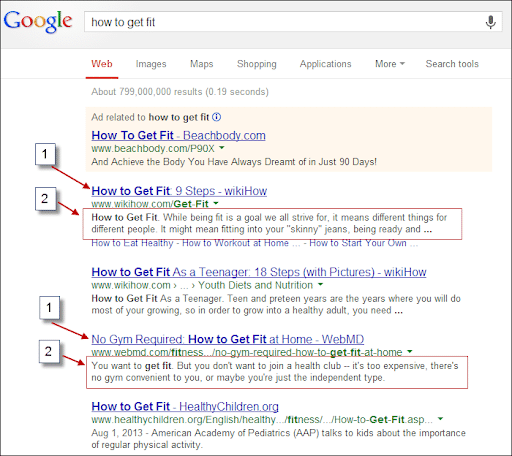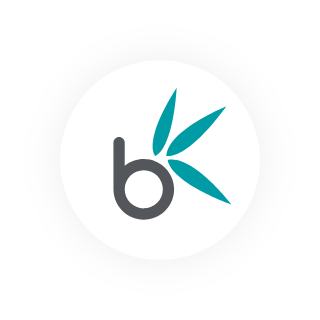The essential digital marketing terms explained
Digital marketing is used as an umbrella term for all online advertisements. This can cover things like ads on Google, sponsored social media posts, and SEO optimisation. Bamboo Nine offers both SEO and PPC campaigns, alongside our expert digital PR and paid social teams. In this glossary, we’ll give an overview of the key digital marketing terms you’ll need to know in the worlds of SEO and PPC, giving you an idea of what our work involves.

SEO Terms
SEO campaigns will cover a wide breadth of changes and additions to a website. In this glossary we’ll cover the basic terms used within the SEO industry, helping you to understand the digital marketing terms and definitions that professionals use every day.
SEO
Search engine optimisation, commonly referred to as SEO, involves making changes to a website to improve its Google rankings on relevant search terms. This can involve posting compelling content on the website, making technical improvements, and gaining a reputation through other quality websites. If you’re looking to increase your business’s brand awareness, drive relevant traffic and boost your website’s organic ranking, you need SEO.
SEO Copywriting
Copywriting, the art of writing content for marketing, is used throughout SEO campaigns. Websites will be looking to target relevant google searches, known as keyword searches, bringing traffic to their website. SEO copywriting can therefore be used to create quality sales pages, or to write compelling content that will target readership and sharing.
Technical SEO
Alongside copywriting, various technical elements of a website will affect its Google rankings. Technical SEO will focus on making the website easier to assess by Google, quicker to load, and ensuring that it offers a good experience for users. Having a poorly performing website will make it more difficult to rank on Google, and also make users more likely to leave.
Algorithm
Within SEO, Google’s algorithm is the process it uses to decide the results for a specific search. The Google algorithm is continually changing, requiring changes in your digital marketing strategies if you are looking to consistently rank pages from a website. Google look at many features when deciding results, such as the quality of content, whether the website is optimised for mobiles and how recent the content is. They also customise searches for users, based on search history and location.
Analytics
Analytics tools are used within SEO to track things like search ranking, the total number of people clicking through from searches (click-through rate), and what they do on your website. This will allow you to create goals, such as lead generation, sales or file downloads. Google Analytics is a popular tool used to track users’ activity, letting businesses understand their traffic and adjust their SEO campaigns accordingly.
Authority
The authority of a website is an overall measure of the quality of your website, giving a prediction of how likely it is to rank. This is based on several factors including the number of quality backlinks to your website, the recognition of your brand, and the amount of time visitors spend on your site. Authority is especially important to Google in “Your Money or Your Life” pages (YMYL), this means pages that are used for transactions, the collection of information, or for fields involving matters of health or major life decisions.
Backlink
A backlink is a digital marketing term for a link to your website from a different website. This could be a link to a product page from a blog, or a link to an engaging article from a social media page. Google places a high value on quality backlinks, boosting the rankings for websites seen to be generating traffic from other sites.
Paying for low-quality backlinks, a disreputable SEO strategy, can earn you a penalisation from Google. If you have poor backlinks, you can disavow them to Google, avoiding penalties. The practice of building high-quality backlinks is called link building, which will be involved in any comprehensive SEO strategy.
Call to Action (CTA)
A call to action, or CTA, is a specific phrase designed to encourage an action from a reader. This action can be to click on a specific web page or to make a purchase. Calls to action should be short and compelling, such as “Explore Our Range” or “Buy Our Product Today”. They are used throughout a marketing strategy to drive customer engagement.
Click-Through Rate (CTR)
Shortened to CTR, the click-through rate of a page is a digital marketing term for the percentage of impressions on Google that resulted in a visit to the site. This can be improved by writing more compelling titles and meta descriptions, and by having a readable URL (the website address). Having a high CTR is obviously important to drive visitors to your site.
Crawling
Search engines like Google use a program called a crawler to map websites, creating an index of each page that can then be used for google searches. Having your website pages crawled and indexed is vital in SEO, allowing you to rank. You can assist the crawling process by having a well-structured site with quality, varied content. A robots.txt file can be installed on a web page to manage which pages of your site are crawled. Along with a sitemap, this can help to ensure that the pages you want to be searched for are indexed successfully on Google.
Digital PR
Digital PR seeks to increase awareness of a website or brand via online and offline methods, driving attention to unique content made with a similar eye to optimisation you might see in SEO copywriting. Digital PR looks to gain authoritative, influential coverage of a website or brand, increasing awareness and generating quality backlinks.
Headings
Headings are used within a webpage to give it structure, and increase accessibility. An article that uses a heading based structure will be more pleasing to readers as well as Google. Not looking like a huge block of text will also allow them to scroll through to relevant sections. Headings are split into H1s, H2s. and H3s etc, each showing a deeper level within the article. For example, the main heading on this page “The Essential Digital Marketing Terms Explained” is an H1, “SEO Terms” is an H2, and every definition is an H3.
Index/No Index
An index is the database used by a search engine to store information on a website. Websites like Google will use crawlers to analyse websites, indexing the pages, which means they can then be found within search results. Pages can be marked as “No Index” through the robots.txt file, meaning they won’t be included in search results.
Keywords
Keywords are at the heart of SEO copywriting, with a suite of digital marketing terms connected to them. Companies will be looking to rank on Google for terms that are relevant to their company (an example would be that a company Levi’s would want to rank for keyword terms “Jeans”, “Men’s Jeans”, “Women’s Jeans”, “Jeans For Kids” etc). You can target these searches by including the relevant keyword within the copy on the website, be that in sales pages or articles. A long-tail keyword is one that is longer, often a phrase, such as “How to Wash Jeans” or “What Are Jeans Made of?”, targeting these keywords can bring engaged traffic to a website. Keyword density is the number of times a keyword is used within a page. Overusing a keyword, known as keyword stuffing, will harm your position within the Google rankings.
Landing Page
A landing page is a digital marketing term for a specially designed page on a website that will be arrived at from specific keyword searches. A landing page will always have a specific purpose, such as making a sale or getting a download of a document. Landing pages will often include CTAs for this purpose. Having focused landing pages can help to increase sales by engaging readers with their specific keywords, and selling the benefits of your products or services.
Metadata
Metadata is information about a website stored in the HTML that isn’t a part of the webpage as displayed. In SEO, metadata is used to create meta titles and meta descriptions. These are the text that will be displayed on the google results page. Meta titles and descriptions should be written to indicate what the page is about.

The meta title is the larger blue text bar that a user can click on, and the meta description is the text below that. Writing compelling metadata is a key part of SEO copywriting, helping to increase the click-through rate by utilising features like CTAs. If you don’t include metadata within the HTML, Google will autogenerate a meta title and description based on your page.
In many cases, this will be less compelling and will not fully fit within the pixel limits (600px for the title, 960px for the description) leaving you with ellipses rather than a full title.
No-Follow Link
A no-follow link is a link within a website that is marked within the HTML as “nofollow”. This means that the link won’t be crawled by sites like Google, and won’t contribute to link building. This tool was originally used to stop the spamming of comments within blogs with backlinks to other sites, but is today used by other authoritative websites like Wikipedia and Reddit to dissuade users from trying to get backlinks. Paid links should all be marked as “nofollow” according to Google’s rules, with penalties for those who don’t.
Penalty
Websites that violate Google’s terms, either through spam, paid backlinks or other black hat (against the rules) tactics can earn penalties from Google. In the initial sense, this will mean that your rankings for targeted keywords will fall, sometimes dramatically. For manually given penalties you will need to make changes and appeal to Google to improve your rankings again. In extreme cases Google may blacklist your site, meaning that none of your pages will be indexed.
Ranking (page rank or page authority)
The ranking of a page is its place within the Google results for a particular keyword. The goal of an SEO marketing campaign will normally be to increase page rankings for relevant keywords, targeting the traffic this will bring to the site. Page authority is a term used to measure how a page will rank on Google. It will cover all elements of SEO, original content, keyword usage, link building, and technical performance. The term domain authenticity is used to analyse the quality of an entire website, rather than just one page.
SERP (organic search results)
The Search Engine Results Page, or SERP, is a digital marketing term for the pages found when searching terms in a search engine. The goal of SEO is to get a good place on the SERP for a webpage. It’s worth remembering the degree to which Google will personalise results, so the get a generalised SERP you should look on a browser whilst using privacy mode.
Sitemap
A sitemap is a file, much like the robots.txt file, that exists to give useful information about the pages on your website. It will provide all the information needed to crawl your website, showing the links between pages, and all videos and files located on the website. While not strictly needed, having a sitemap will help your pages to get indexed, allowing them to rank on Google.
Usability
Usability is a metric to examine how your site performs for users, aiming to increase goal completion. When a user arrives on a website through Google, Google will monitor their behaviour, and if they immediately leave the page this will harm your rankings. HIgh usability means a site that is quick, attractive, and well laid out, minimising the number of clicks needed to create a sale or lead. This will both benefit your rankings and your sales.

Paid Media Terms
Paid Media is a different form of online advertising, with a variety of digital marketing terms to know. In this glossary of common terms and definitions, we’ll explain the sort of terms that a PPC professional would use.
PPC
PPC is a form of digital marketing where advertisers bid to show ads in a variety of online placements, such as on search results pages or websites. The advertiser only pays when their ad is clicked on, and can control the maximum amount they’re willing to pay for each click.
Audience
Google allows you to tailor audience targeting for your PPC campaign based on demographic data such as age, gender, and location, or around specific interests. Aiming for a specific target audience can help to improve conversion rate, as users will be more relevant to your product or service.
Impressions
The total number of impressions equates to the total number of times that your ad has been served.
Clicks
The total number of clicks equates to the number of times that your ad has been clicked on.
Click-through-rate
Also known as CTR, click-through rate is a percentage metric showing the number of clicks your ad generates relative to the number of times that the ad is shown. The higher the click-through-rate, the higher the quality score of your account and the lower the cost-per-click.
Cost
The total amount that your campaigns have spent. You will usually search for this over a specific time frame, either to check account performance or compare with another time period.
Cost-per-click
Also known as CPC, this is the total cost you are charged when a user clicks on one of your paid ads. Average CPC is calculated by dividing cost by clicks.
Conversions
Customer actions on your site that result in a value, for example, enquiring through a phone call, completing a sign-up form or making a purchase.
Conversion rate
How often conversions are generated relative to the number of visitors to your site. This can be calculated by dividing the total number of conversions by the total number of clicks or users within the same amount of time. A higher conversion rate suggests that you are successfully targeting high-intent, accurate users who are searching for your services.
Quality score
Quality score is made up of several factors such as user landing page experience, the maximum CPC set for each campaign/keyword, the expected CTR of the ad and its ad relevance (see below). The higher the quality score of the account the better, as quality score helps determine where your ads will be placed in comparison to other ads using the same/similar keywords.
Automated bidding
Algorithm-led bid strategies designed to maximise results based on selected campaign goals. Google analyses user data and adjusts bids accordingly depending on the bid strategy objective.
Campaigns
Categories that ads are categorised and divided into based on common attributes and themes. These tend to be broader than ad groups in terms of categorisation (see below).
Ad groups
Ads and keywords are further divided into these themed groupings within campaigns. The campaign structure (STAG or DABS) will dictate how granular these ad groups will be.
Keywords
Specific words or phrases to describe the services or products that you offer, that will aim to match search queries from users.
Responsive search ads
A dynamic ad format which tests different combinations of headlines and descriptions. Advertisers are able to provide up to 15 headlines and 4 descriptions for each ad.
Performance max campaigns
A multi-channel, goal-based campaign type utilised to promote keywords, products or services. These campaigns can only be used with automated bidding strategies.
Product feeds
A collection of data that contains the inventory of a merchant’s available products, including product attributes like colour or product title.
Expert Digital Marketing from Bamboo Nine
Bamboo Nine is a digital marketing agency based in Brighton, offering both SEO and PPC campaigns to a huge range of companies. We are transparent, hard working, and collaborative, with 30 day rolling contracts for all clients. We also have in house digital PR, social media, and design teams, allowing us to cover all digital marketing needs.
Get in contact with us today to discover how we can help your business to thrive online.


